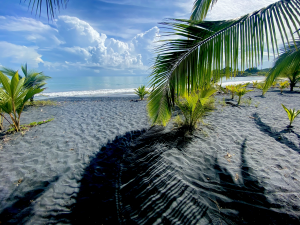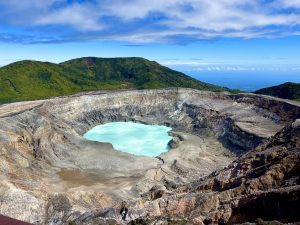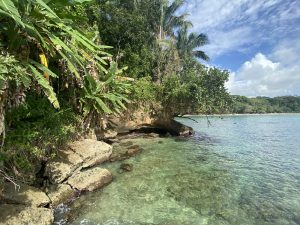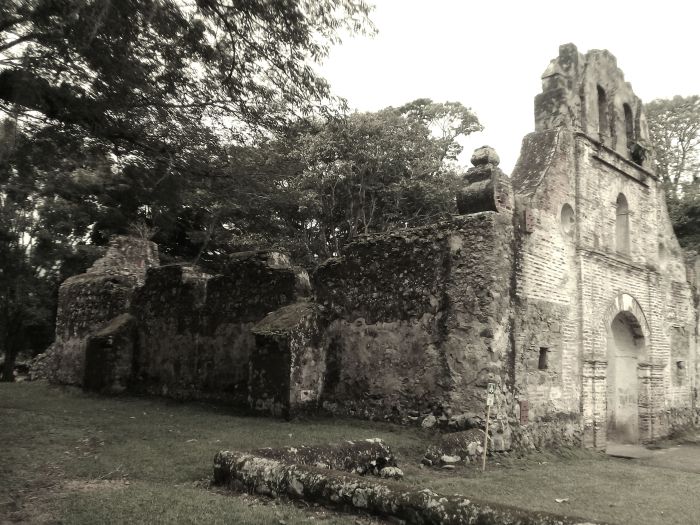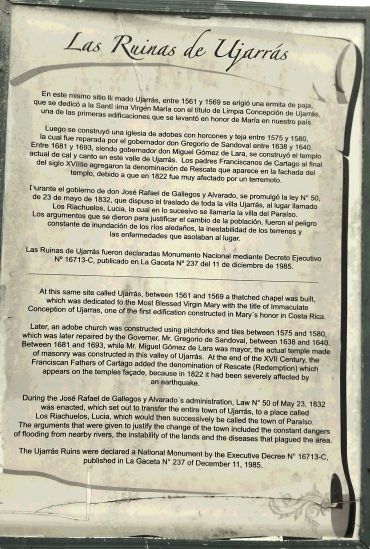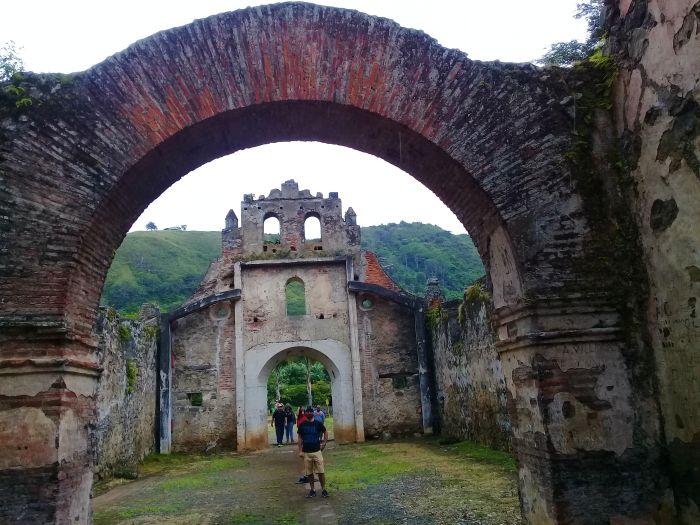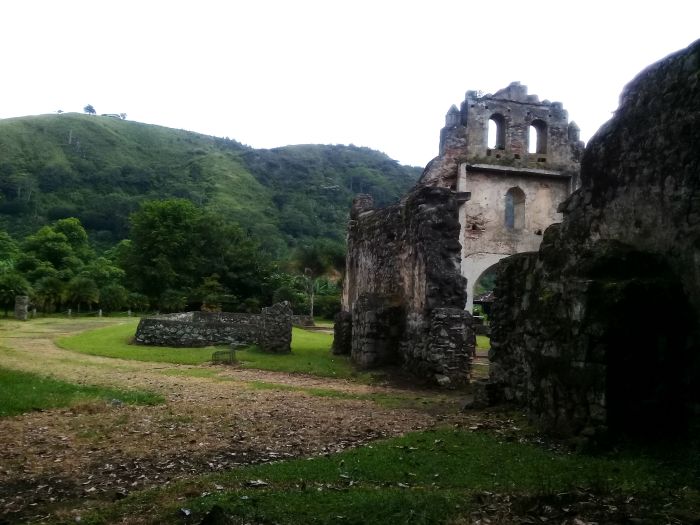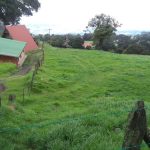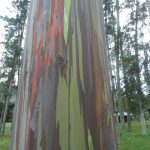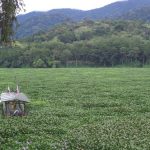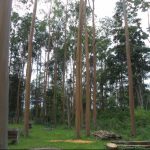For the first quarter of 2023, planting trees and green-thumbing brought the Idioma Internacional community together again for another event through our social responsibility movement, Idioma Cares.
We were able to work with Planta Mi Arbol which is an organization that works with individuals to help reduce our carbon footprint. The goal was to be the change that we wanted to see in the environment by planting trees that will last for years to come. Idioma Cares was able to donate, and plant the trees in an area designated for reforestation.
On Saturday morning, February 18th, 2023, 15 team members in Costa Rica went on site to Planta Mi Arbol’s campus in La Angelina, Cartago and donated their time.Team members hiked 1200 meters up a gorgeous mountain bike path for this quite windy occasion. We planted trees of many different species including soursop, cedar, and cherry, to name a few! We all grabbed shovels, got our hands dirty, and planted trees not only for ourselves but for team members that were not able to attend.
Idioma Cares’ initiatives always incorporate a way that our remote team can participate as well. Therefore, our team outside of the central valley of Costa Rica was assigned a team buddy who planted their tree for them in their name and received virtual documentation of their tree being planted. This is an example of our team working together to make a difference not just with individuals, but with our beautiful blue planet!
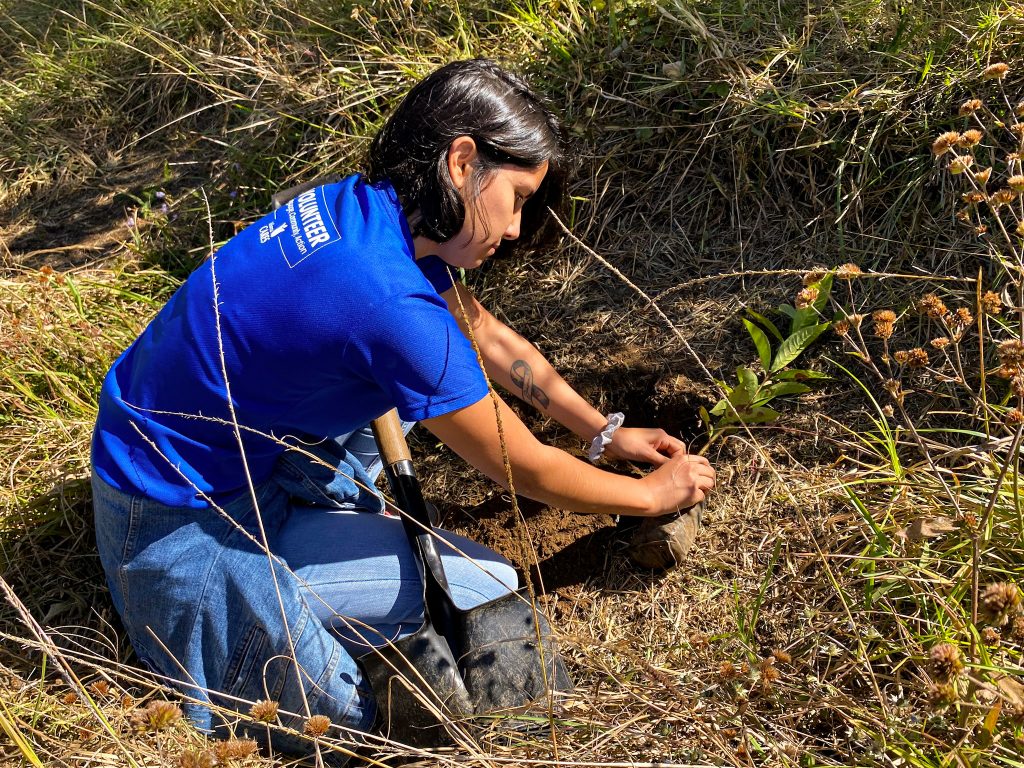
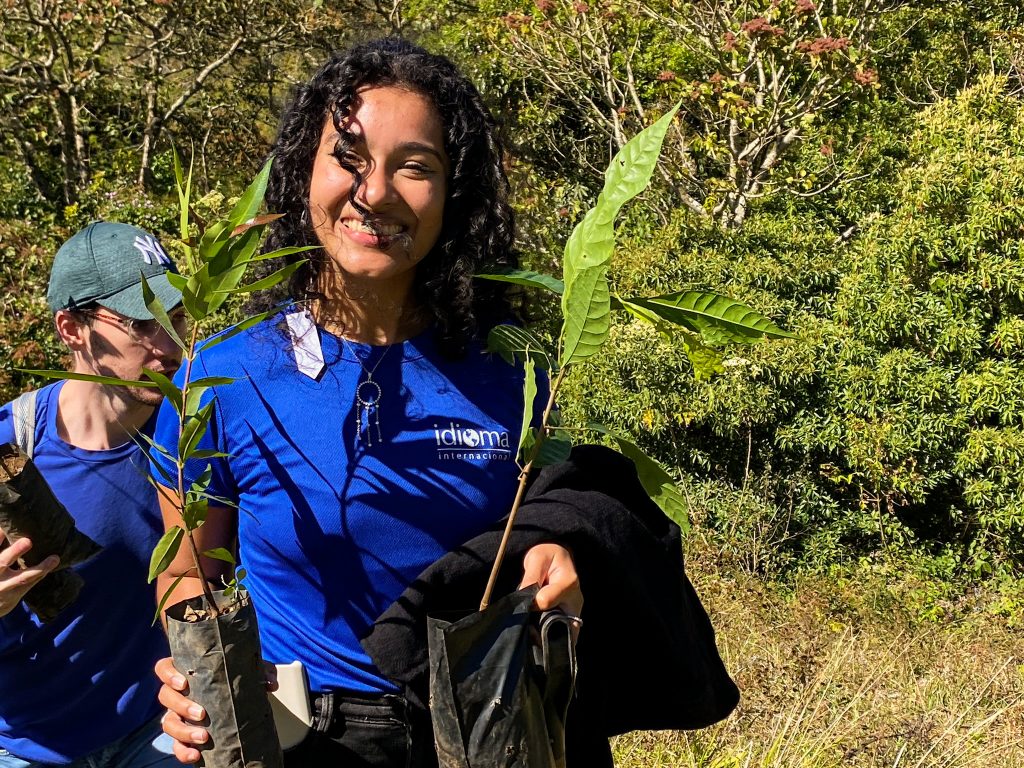
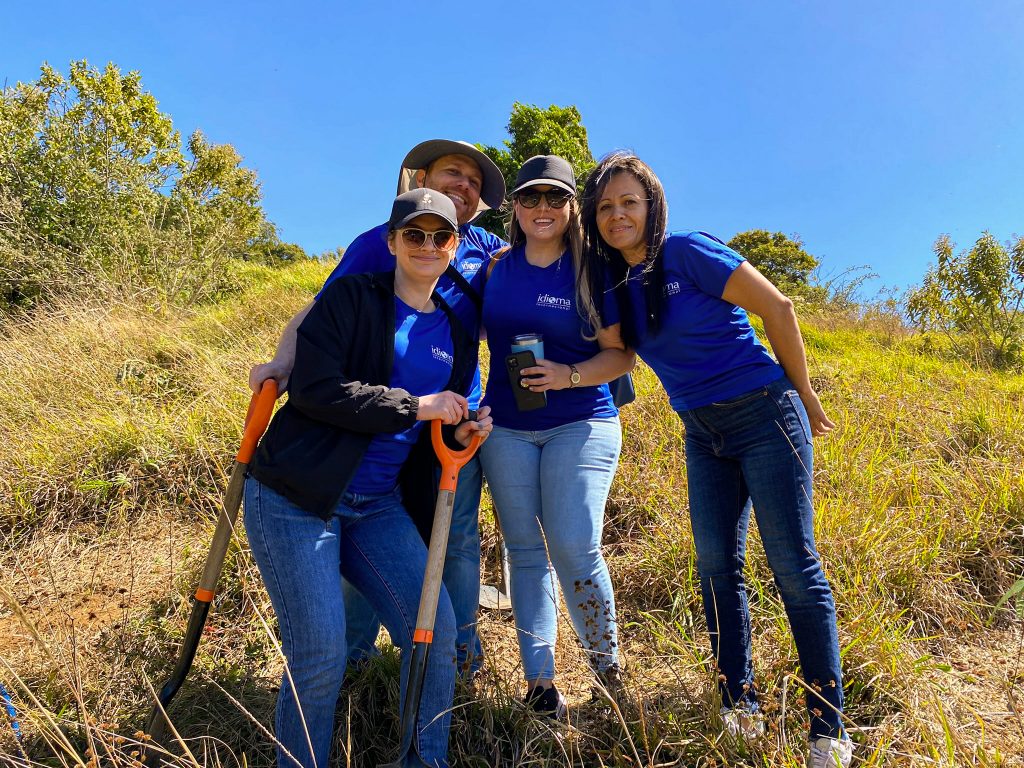
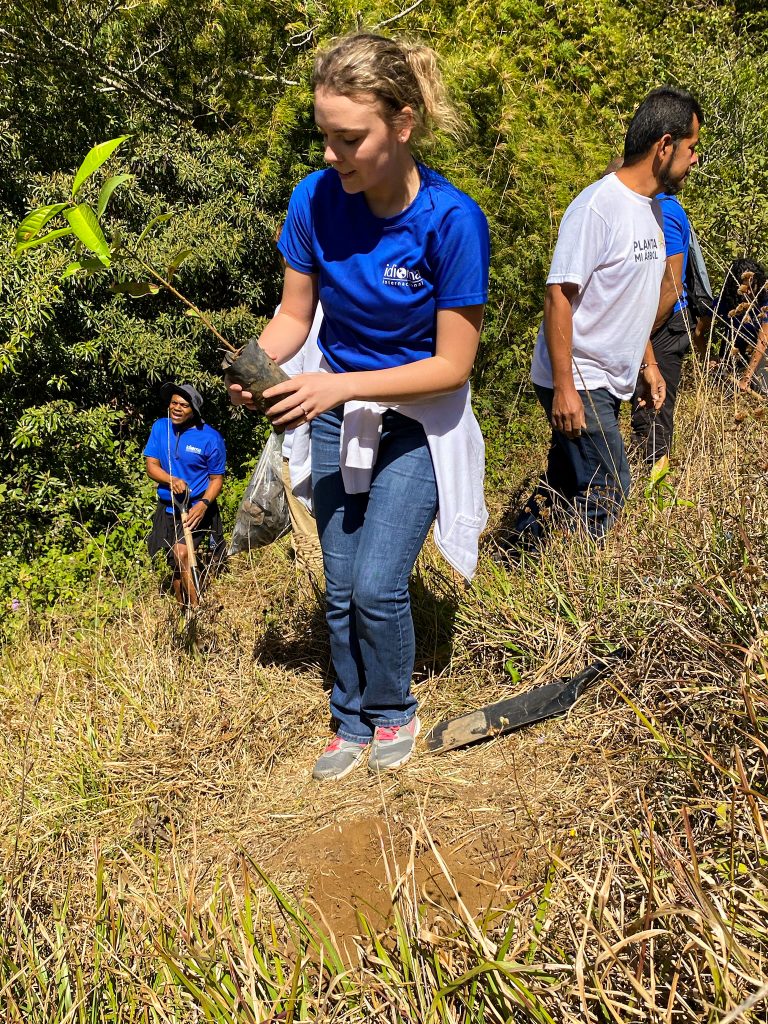
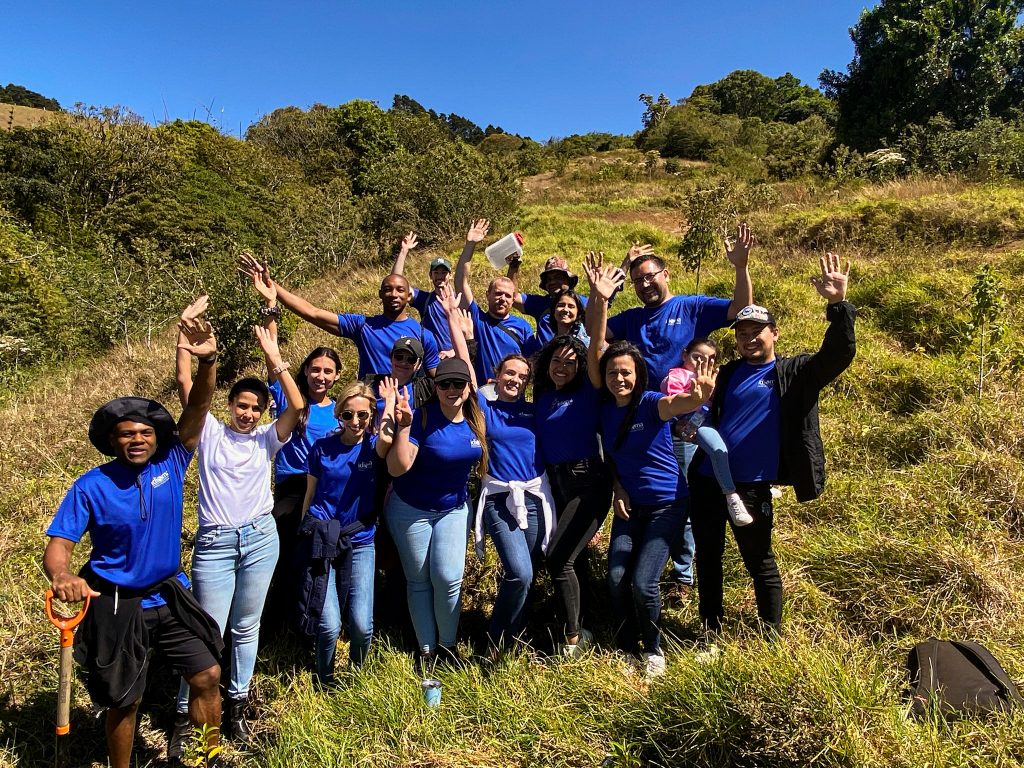
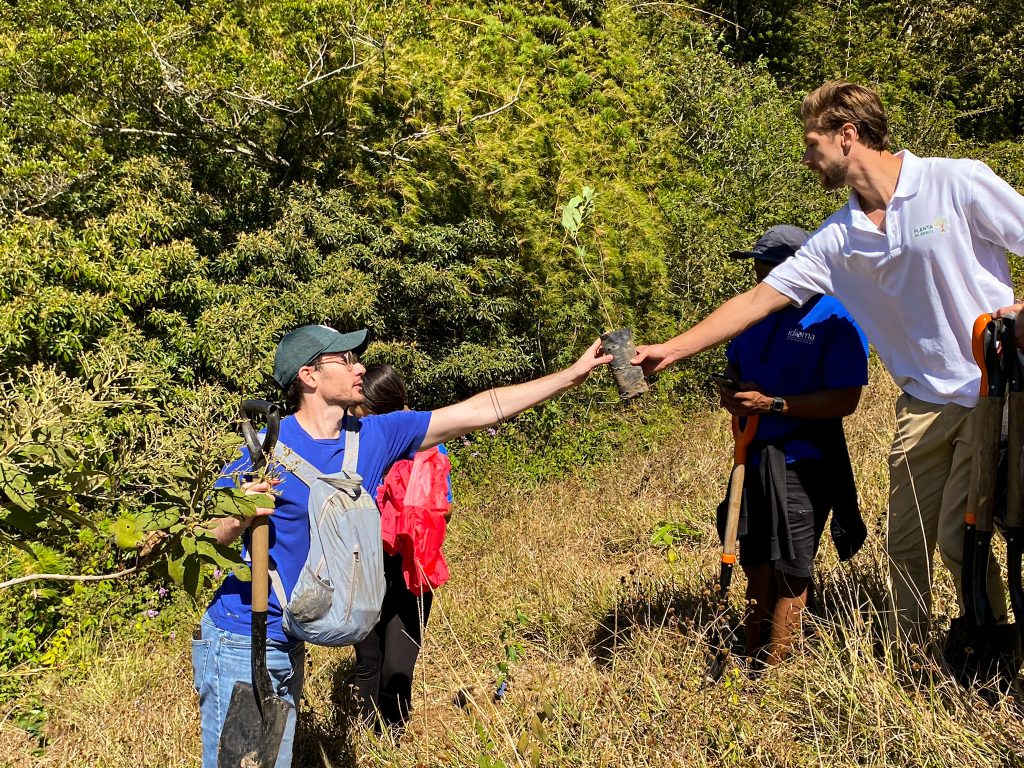
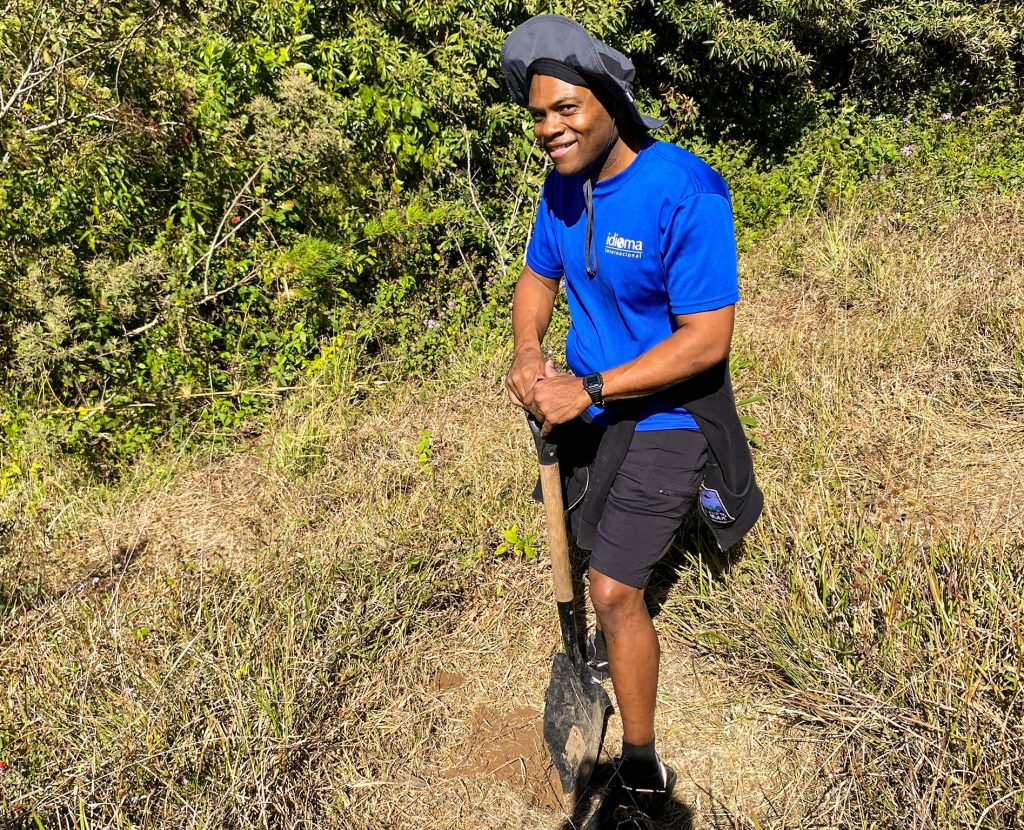
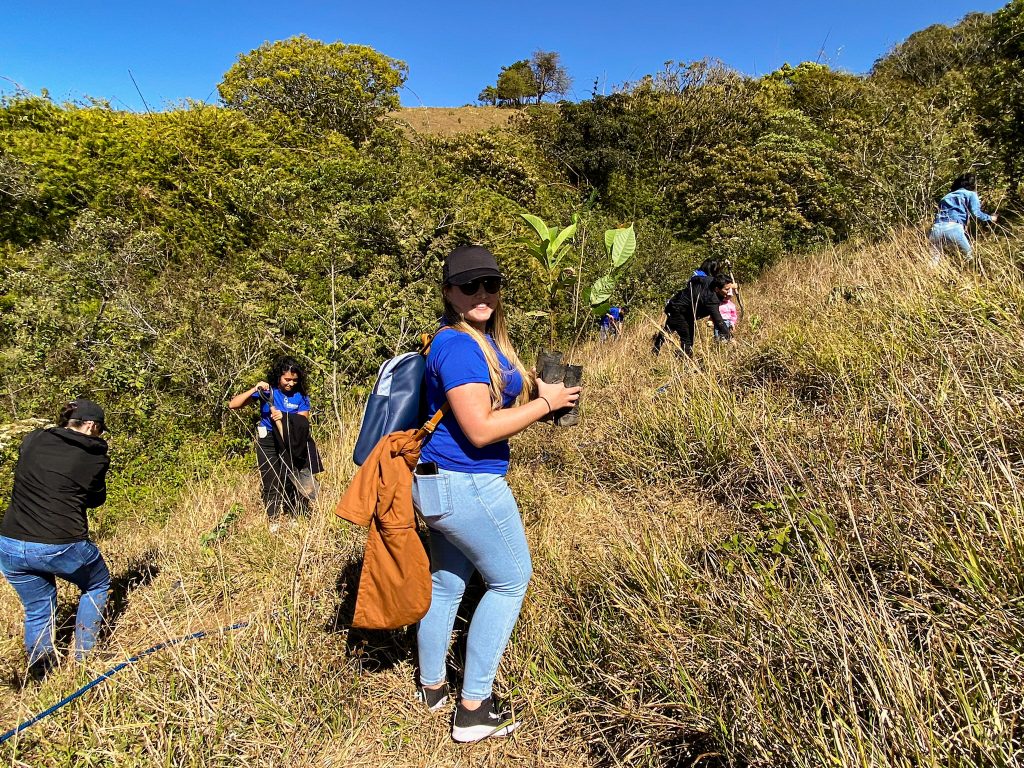
Please stay tuned for our next initiative for the second quarter of 2023!
Back in the day, as they say, the Idioma team used to get together every Sunday evening to have dinner as a team, and always at the home of the first academic director, Joy. At that time, we all lived in the same neighborhood and we were a much smaller operation.
Fast forward to 2019 and having nearly tripled in size, we now live all around the central valley, counting four of the seven provinces as home to Idioma and its team.
Nonetheless, the passion for spending time together and eating together has never been far from Idioma; it was in this spirit, to take some time outside of work to share, laugh, eat and enjoy the rich diversity on our team that we organized a mid-year potluck in the late afternoon on Sunday, June 30th.
At 4pm precisely, the hour that we started the potluck, it began to downpour…torrentially and so much so that within minutes, the road gutter in front of our current academic director’s apartment, between the road and the door to his apartment, was filled with a half-foot deep, six-foot wide rushing ‘river!’ It’s a good thing that everyone arrived on Tico time and not on time! By 4:30pm when people started showing up, the downpour downgraded to just heavy rain and the ‘river’ was crossable by way of a leap and we all made it upstairs to start warming up food and eating!
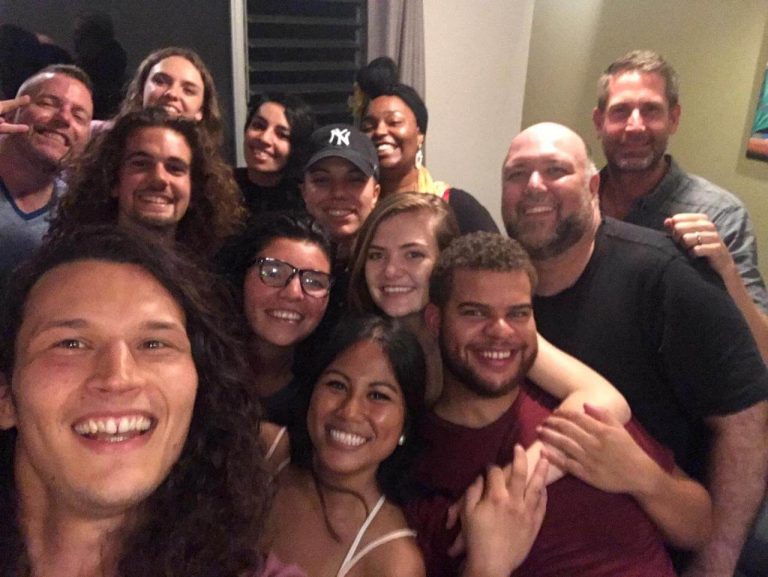
We had shrimp and grits along with sausage and fried apples from some of the southerners on staff. We had fruit salad and a huge pineapple for a more Tico flair. And no potluck is complete without a couple of potato dishes, as in mashed potatoes and home fries!
We all took turns grazing through the food line in Brendan’s tiny kitchen and the chatter and clatter soon took a downward turn as the silence of good-eatin’ commenced! There was enough food for seconds (and thirds for some, who shall remain nameless!) and a surplus to take to the office for some Monday munching.
Add we enjoyed some guitar strummin’ and singing in an impromptu session before we capped the evening off early but very full, full of international fare, Idioma friends and the Costa Rican Pura Vida vibe.
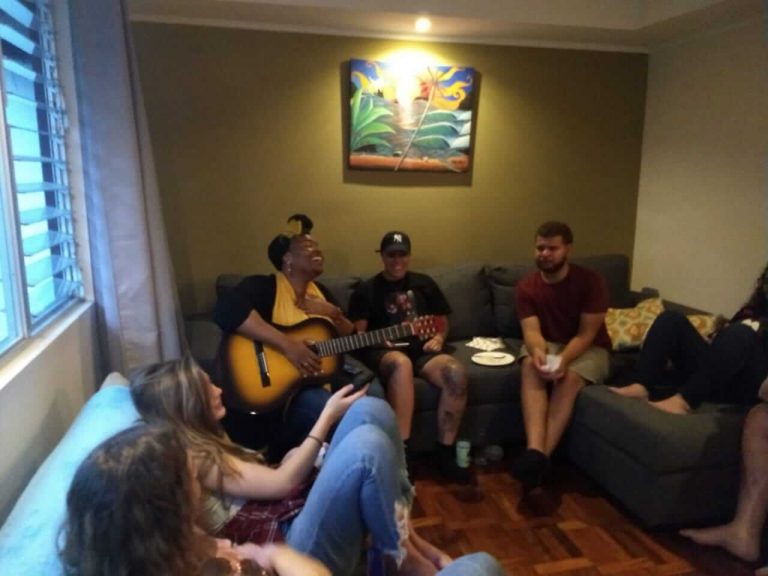
-The Author
The sun warmed the tent. I opened my eyes to the beauty of the day. Birds sang the morning chorus to remind me not to stall, not to dawdle. There was so much to see. I began by making coffee. My companion and I ate a high energy breakfast, prepared our lunch, and packed the bag. Tying up my boots, my heart began to race wildly at the thought of what this hike was going to bring.
Once upon the first trail, we walked through the ruins of the former agricultural town, Hacienda La Marta, that used to operate a lively market for coffee, bananas, sugar, and milk in this park. Barely 3 meters away from the ruins, down the main trail into the rain forest, the scene drastically changed. I already felt like I was in the middle of the ever-changing natural environment. My companion and I were not even 30 minutes into our tour, yet I already had an excitement that only natural glory can bring.

The trails themselves were micro-climates that were different in so many ways. Trees canopied the entire path, shrouding the forest in a sense of wonder and mystery. The earth smelled fresh, wet, and alive. I could sense the life all around me. Like a small child, I touched everything, needing the new experience to be as full as possible. My companion laughed at my childish wonder. However, the mosses were all new and felt as such, the leaves looked as fake as they do in plastic offices, the flowers were practically glowing and perfume-strength fragrant. I was a child again.
After about an hour, the path took a steep climb to a precipice where we encountered our first mirador (look-out). The park had erected a sheltered tower upon this peak to give hikers the best possible view of the valley and distant mountains. It was magnificent. With no human construction in site, other than what I was standing upon, I looked out with awe. My companion, who had already been here, was just laughing at my look of pure love. We left this mirador to head to another which we thought would take us a while to reach. We paused briefly (I paused briefly, my companion only slowing once she noticed my lagging). I was in awe of a type of fungus I had never seen. I continued my child-like touching of everything new, which was everything.
By the time we reached the second mirador, the humidity had escalated to full. My shirt was as wet as if I had jumped into the river. My companion and I really felt what it meant to be in a tropical rain forest. We rested and I attempted to dry out my gear in the sun. Here, the railing keeping us from falling into the abyss, was the only thing that was placed by man. The sun beat down, but the breeze was cool. The distances seen were incredible. We felt like the only two humans for miles. We rested, ate a small snack of fruit and nuts, and reflected peacefully in each other’s company.
The next trail we took was an idyllic path through some of thickest forest I have ever seen. Without a watch, I would not have been able to guess the time. The sun was blocked entirely by the epic canopy that shaded and cooled the trail but also wrapped me in humidity like a thick blanket. The silence. My companion and I stopped just to hear the silence. It was eerie in a mystifying and beautiful way. It was here that I felt the most isolated from the world and destructiveness of man. I breathed in the serenity.
We continued winding through the beautiful trails, encountering all sorts of flora and fauna: white-faced monkeys, beetles the size of my fist, every type of moss imaginable, labios de mujeres (a flower that looks like puckered lips), trees the size of skyscrapers, lizards of all varieties, hundreds of colorful butterflies.
My companion and I were nearing the pozas (swimming holes). We saw a sign for a waterfall and quickly took the detour. We walked down some huge carved stairs, turned a corner around a rock face, and there it was right before my eyes. Before I even knew what I was doing, I had my shirt off, my bag thrown carelessly to the side, my hat and sunglasses resting upon it. I had to shimmy around a giant boulder but then I was standing next to the waterfall. It was not huge, but it was beautiful. The water cascading down the side of this mountain was breathtaking. I dunked my head into the pouring stream.
It was clear, clean, refreshing. I had to take a drink just to say that I have drank from a waterfall in Costa Rica. After I played in the waterfall for a minute, it was my companion’s turn. She was just as pleased about this as I was. We relaxed for a minute next to the waterfall on the boulder before heading off for the final leg of the hike.
Our last stretch of trail was littered with pozas. It seemed that every 200 meters there was another place to sit by the raging river, or if you were lucky there were some calmer places to take a dip. It was pure serenity. My companion and I chose a secluded poza to take our final rest before heading back to camp. Here we relaxed and took in the scenery of the majestic river. We talked lightly and briefly about all we had seen. It was the most amazing day in my recent memory. I will have to make another trip to this magnificent rainforest where it seemed that the magic of nature was at its most perfect state.
Literally translated as Day of the Encounter of Cultures, October 12th marks the 525th anniversary of Christopher Colombus’ discovery of the Americas. Costa Rica celebrates this day as a national holiday. Throughout the Americas, the holiday has several names: Colombus Day in the United States; Discovery Day in the Bahamas, and Americas Day elsewhere.
The celebration here in Costa Rica is centered around the blending of cultures honoring diversity, tolerance, exchange of goods, trade, and respect among cultures. It is viewed as a time to reflect on a mindfulness of positive change, multi-culturalism, and miscegenation (the interbreeding of people considered to be of different races). https://en.oxforddictionaries.com

The actual festivities in which Costa Ricans participate include local meetings, forums, and fairs that give praise and awareness to the aboriginal people of the Americas. Also, some of the Caribbean towns and cities will hold their own carnivals to give thanks to the influence of the African cultures that have also greatly impacted Costa Rica’s rich diversity. Many people located all over the country will participate in traditional dances, music, and cuisine. This holiday truly represents the idea of tolerance and extends to include many ideas of international relations.
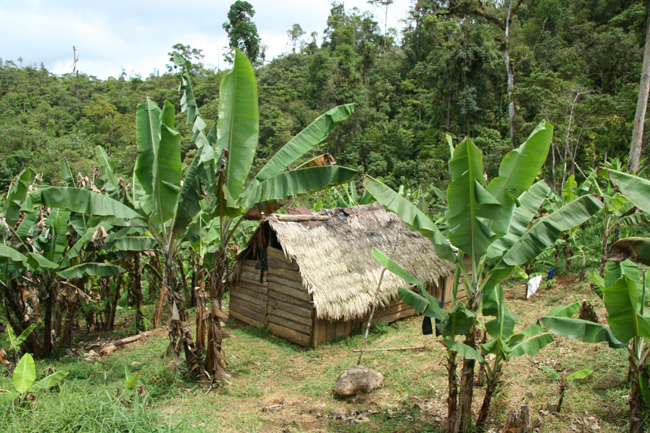
These holidays have been called into question lately all throughout the Americas because of the atrocities committed by Colombus and his conquering parties, the horrific conditions endured by the aboriginal people of the Americas, and the fact that there is evidence of others discovering the Americas before 1492. However, the focus in Costa Rica is on the positive outcomes of economic trade routes, diversification of peoples and agriculture, and multi-cultural/ multi-lingual education.
Sources:
http://www.turismocostarica.org/turismocostarica_informacion_costarica.aspx?idContent=19
http://www.cuandopasa.com/index.php?v=v85570h
The site of Las Ruinas de Ujarrás is surrounded by luscious green countryside, immaculate landscapes, winding rivers, and pristine mountains. Located deep in the Orosi valley, near the Cachí Reservoir, visitors experience a bond to the historical foundations of colonial Costa Rica as they approach the park containing the remains of the church (La Iglesia de Nuestra Señora de la Limpia Concepción). Once inside the monument grounds, you can literally touch history.
Built in the 1580’s, local legend states that a fisherman of the Huetar discovered a box containing a painting of the Virgin Mary and the church was built on this site. The Virgin Mary had thus been considered a protector of the village.
La Iglesia de Nuestra Señora de la Limpia Concepción, or what remains standing can be approached, touched, and adored. As you near the ruins, the history is palatable and the senses are alerted to the reverence that belongs to such structures throughout the world. From the stone pathway to the limestone altar, Las Ruinas de Ujarrás creates a sense of awe. Visitors walk through the large and still nearly perfect archways to the inner chamber that was once where the congregation would pray together.
Outside of the church, you see the buttresses still supporting the outer walls of the edifice. Moss grows peacefully all along the masonry. It is a scene from a fairy tale with the mountains in the background. Nearby the church stands a beautifully sad tree that is probably as old as the church itself, weeping in the common area as families picnic, play, and admire this brilliant monument.
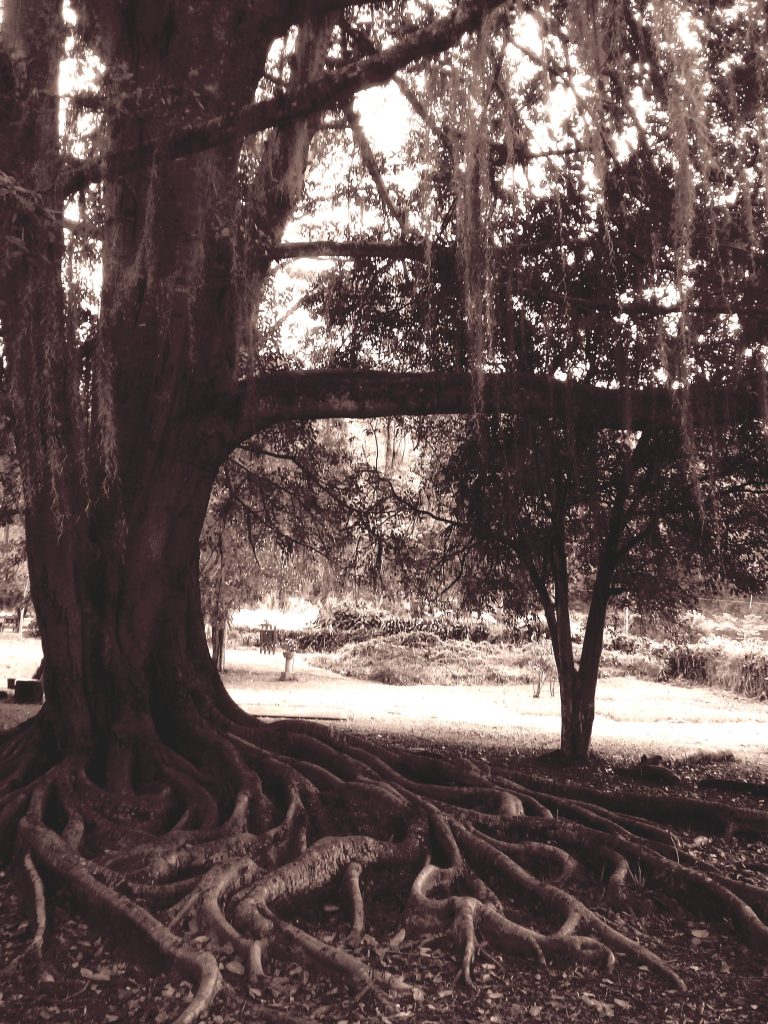
There are many places to visit in Costa Rica, but not many with such a peaceful and elegant grace as Las Ruinas de Ujarrás. For lovers of history, religion, or just serenity, this site has enough beauty to slip away into a simpler time.
Sources:
http://www.lacasonadelcafetal.com/las_ruinas_de_ujarras
Similar to many other nations around the world, Costa Rica has a strong celebration for the nation’s independence. September 15th marks the day that Costa Rica was granted its independence from Spanish Colonial rule in 1821. The date was the final victory by Mexico in the Mexican War for Independence. After Mexico’s victory, “Guatemala declared independence on behalf of Central America.” (www.costarica.com) Spain granted the claimed independence without further conflict.
“Independence Day celebrations begin on September 14th, when the Torch of Freedom arrives in Cartago.” Many young children will crowd the street with hand-made lanterns that are symbolic of the Torch of Freedom. That night, when the torch reaches the final destination of Cartago, the original capital when independence was claimed, the entire nation stands to sing the national anthem. The rest of the celebration takes place on September 15th with street parades honoring traditions of the nation’s forming. These are held in every town throughout the country. (www.costarica.com)
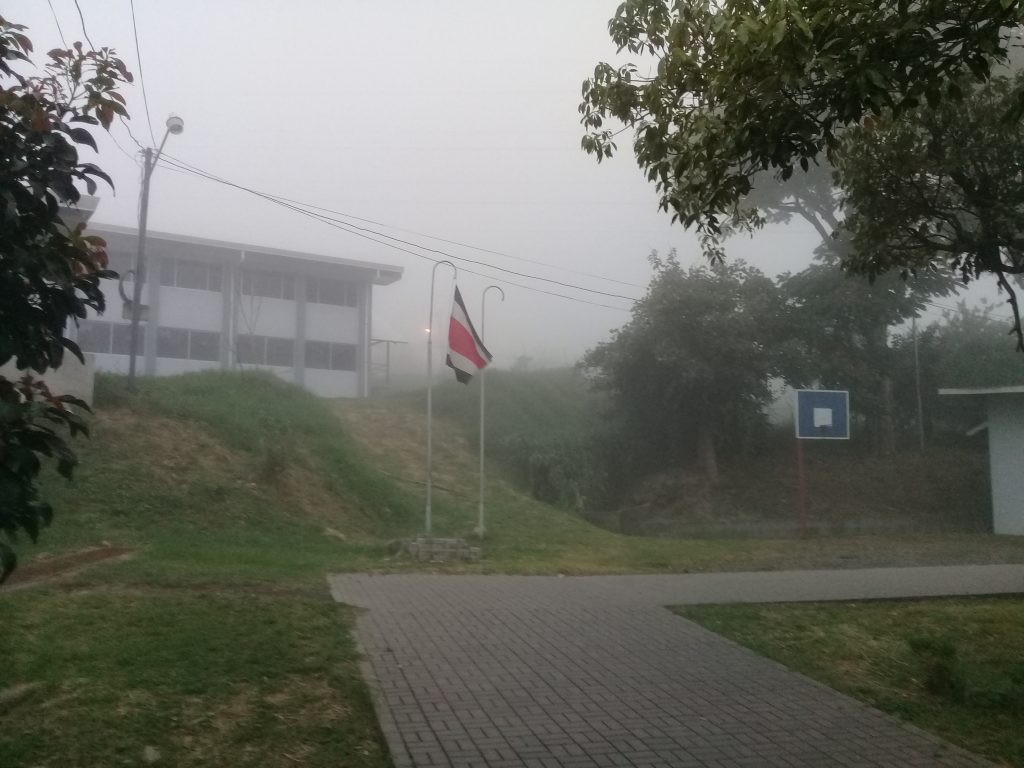
With that little piece of history in mind the author decided to ask Costa Rican’s what Independence Day means for them. The results below are told by former and current students in Idioma Internacional’s program, and give a much broader understanding of what Independence Day truly means to the people.
What does Independence Day Mean for You?
“Everything that the Costa Rican people did to be today the country [it] is… every year that passes since we [became] independent we must try to love and protect the country more and make it a better place for the future generations” -Axel H.
“[T}he day of independence is one of the days where Costa Ricans unite to celebrate the importance of being an independent and democratic nation. Also, it is one of my favorite days of the year for the colorful parades, the hymns, “la marimba,” that are part of the national identity that we can still enjoy in the country.” -Cameron Z.

“For me [it] means peace, love to Costa Rica… the country in that moment shows [strength] and power.” -Noelany A.
“It’s a free day! Haha! In Costa Rica a little percentage of the habitats don’t have traditions or celebrate so much that day… [However], so many people have the tradition to go see the Patriotic March, with bands and mascaradas. In the schools, [we] celebrate that date [all] week (Civic Week) and all days [we] sing the national anthem and have activities. For me, it’s another celebration!” -Jeison V.
“Independence means peace, love, pride, and sacrifice. It’s a special day to commemorate all those who fought for freedom.” -Melannie M.
“For me Independence Day means liberty. It is something that [changes] our perspective about the world. It changes the reality of Costa Rica, [and] our economy increases. When we see the nature, it reflects the most beautiful part of our nation. When we go to our traditional parade in San Jose, we enjoy the music, the dancers and also we feel proud our country is without an army! We think about the poor areas and just want to eradicate all their problems. I feel proud because we don’t have an army and we spent the money on education!” -Edwin B.
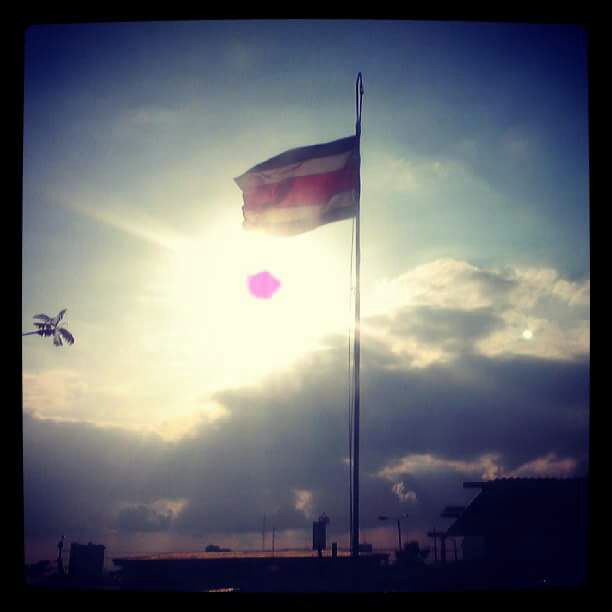
“For me this day is important and very significant for us because since that day we receive the most valuable feeling that we have as human beings: Freedom. We as citizens of this country have the privilege of saying that we live in a country that solves any conflict with a dialogue and not by fighting because everyone has the freedom to express what they think. That’s a privilege that not all countries have and we must appreciate it and celebrate for that!” -Tatiana O.
“Independence Day is a synonym of freedom, and it means that we have the opportunity to reflect [on] our identity. [It is] one of the multiple reasons to be proud of our beautiful country. It means peace, gratitude, happiness, opportunities, development, growth. For me Independence Day is a reminder of how Pura Vida we are!” -Alexandra M.
“For me, Independence Day means like a celebration of our freedom because we were slaves of the Spanish people. Our culture was given back to us. Also, to give honor to those who fought for us to set us free. And to live in peace with all the countries around the world.” -Dariana D.
Part of being an ESL teacher is having to say goodbye. We watch students learn, grow, and become more and more fluent in English. It is a beautiful thing to see so many students progress and get ready to make the next steps in their lives. However, it is also, always a mixed bag of emotions. The only way for me to describe it properly is to tell the story of three of my classes that graduated our program and are moving towards their new phases in life.
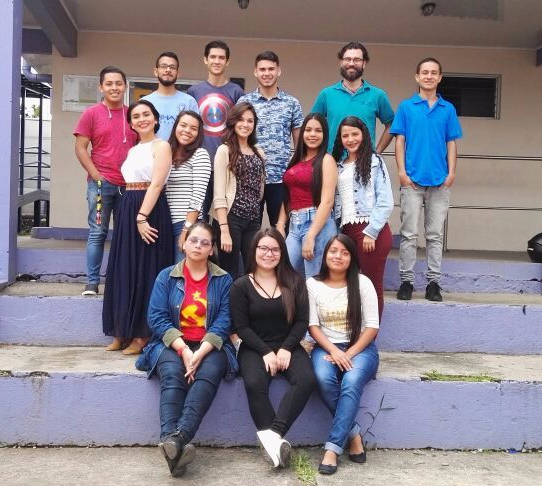
In order to put this in the correct context, I will start from when I first met my classes. All three classes that I had were taken over from other teachers who had to leave because their contracts ended, or they were assigned other classes that conflicted with the schedule of these. I had observed two out of the three classes. During the observations, I was able to see how wonderful these students really are.
Once I was given the classes, I truly connected with the students and found my initial reaction to be absolutely correct. Each student was individually brilliant, and as a whole they made class time incredibly fun. I worked for them for three and a half months. It is not a long time in the grand dance of life, but it was sufficient to understand what kinds of people they are. If every teacher had students like mine, this profession would be saturated with applicants.
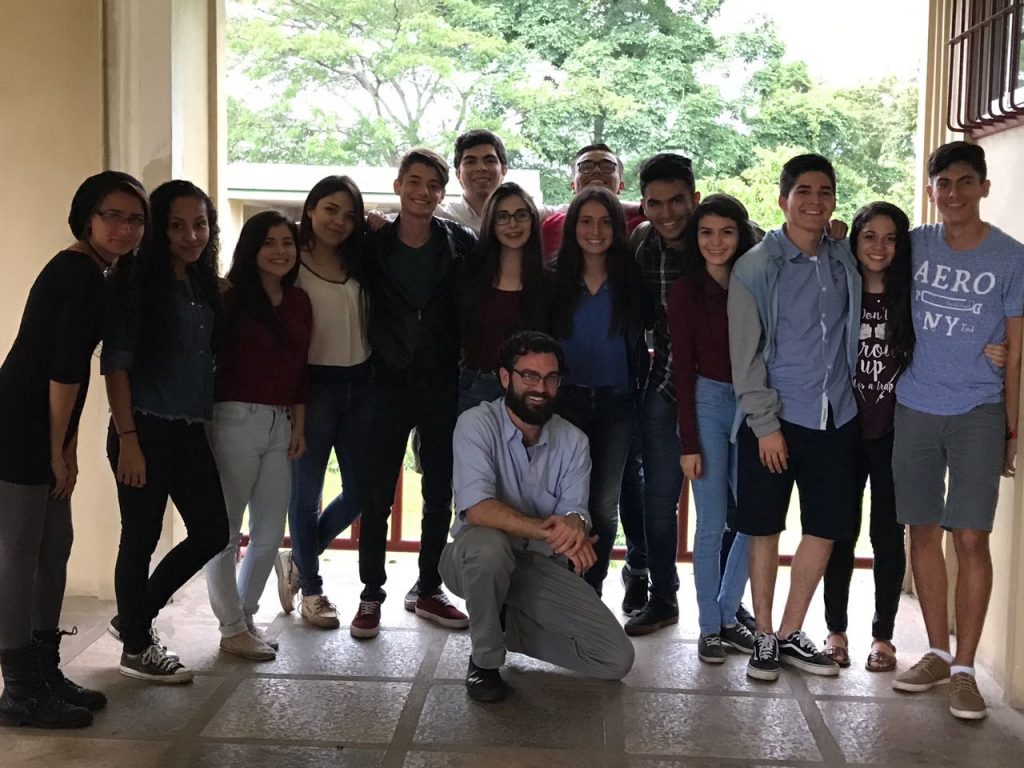
Anyway, after working with them for that time, the end had come near. I only had one last week with them. As the final class for each group approached, I began to feel melancholy. I knew they were excited to be finished. I would have been also, in their shoes. I prepared the lesson with a sinking feeling in my chest. I knew I would miss them, but I didn’t think it would actually affect me this heavily.
I kept the lessons light and fun on the last days. All the students wanted pictures of the entire group, including myself. It was very special to me. I felt more like a part of something than I had in a long time. We took many group photos, made sure that we all looked happy and then finished the class with some good group discussions.

It was the end of the final class. I had all the students packing and preparing to leave. I had my bag organized again, the whiteboard cleared, the chairs put up. Then we all stood there looking at each other. I could tell this was going to be the hard part. I could sense the emotions like a bird senses the dawn. I told them that they could leave, class was over. Then, almost in a resounding chorus, they replied, “but teacher, we don’t want to leave.” I could have cried right then. My heart swelled with admiration and a massive sense of appreciation. These students, who were going to school for 7-9 hours a day, and then more class on Saturdays had just told me they didn’t want to leave! I did cry. It was so meaningful to me.
We left together since we couldn’t leave one by one. We got towards the exit and exchanged our cordial goodbyes (I wasn’t crying anymore). I know that they will go on to accomplish great things. I know that they need to be finished and out of the program. I know that they taught me more than I could ever teach them.
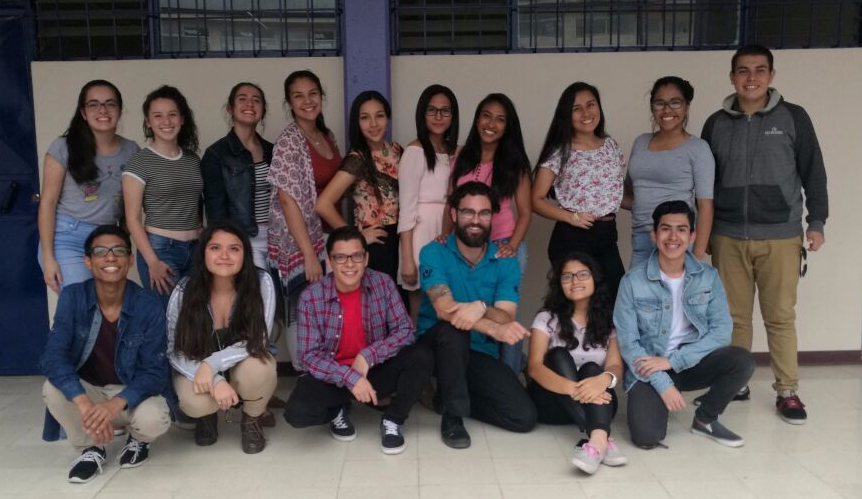
Mother’s Day is celebrated in many countries throughout the world. In the US it is typically on the first Sunday of May. Although there are many shared holidays between the US and Costa Rica, Mother’s Day is not one of them. Here in Costa Rica, Mother’s Day is celebrated on August 15th. This corresponds with the Roman Catholic feast day of The Assumption of Mary. “The Assumption of Mary is a feast day recognizing the selfless and earthly life of Mary and the divinity associated with her heavenly soul,” according to http://www.prosoftnearshore.com/mothers-day-in-costa-rica-august-15/. Unlike the US, Mother’s Day in Costa Rica is National Holiday. The entire day is dedicated to celebrating our mothers.

Although it is important everywhere, the dual purpose of the holiday here in Costa Rica shows how much respect and honor we have for our mothers. There are many ways that people celebrate this very special day. Some of which include buying all types of gifts, taking mothers out for special meals, and making sure they don’t have to do any work. Mainly, the mothers that I spoke with on this day just wanted to be surrounded by family and loved ones. It is most important to make sure they know how much you love them.

“Ma! You get to celebrate twice a year while I live in Costa Rica,” I told my mother when I called in May. She loved the idea. Even though I wouldn’t be able to fly home and visit, we were able to speak on the phone for a few hours. We digitally cheers-ed each other, and drank some wine. Even though this article is a little after the fact, every day could be Mother’s Day. So please don’t forget to tell your mothers that you love and respect them. Every day would be ideal, but we know that’s not always possible.
On that note, I love you MA!

Act II
After leaving the mountain, things began to improve. The cloud we occupied did not follow us down the mountain. We were able to pull over for some the best views I have seen since arriving to Costa Rica. It was also significantly warmer as we made our way down.
Then, my boss and driver had a brilliant idea. He knew of another national park with a large lake that was formed after they installed a hydro-electric power plant. Also, his kids wanted badly to go to said park for a “really awesome” swing that they have there. (It was really awesome). This heavenly place is known as Charrarra.
This park was incredible. The greens were so vibrant and the place swarmed with life. Immediately after arriving we saw a duck with her ducklings, a snake (not dangerous), herons, and other waterfowl. There were amazingly colorful and large eucalyptus trees throughout. The lake was covered in a thick-batch layer of lilies. Some of the ones close to the shore were in full bloom. They had such a majesty.
The group all enjoyed some cold beers together and then we made our way around exploring the park. We wandered down some horse paths and decided it was too risky to dodge the apple grenades. After we had climbed into a model airplane designed for 4 to 6 year-olds, used a 4 person gravity spinning swing, and played some quick toss frisbee, we made our way to a low point lookout that was stunning. Unlike the peak of the volcano, were able to see straight across all of the lake.
After a few gallivanting hours, we were all feeling hungry. We went to a local hotspot for chicharrones and enjoyed a lovely and reasonably priced meal before we made our way back to the city. The moral of the story: even a “bad” start to the day here, can end in wonder and amazement.


